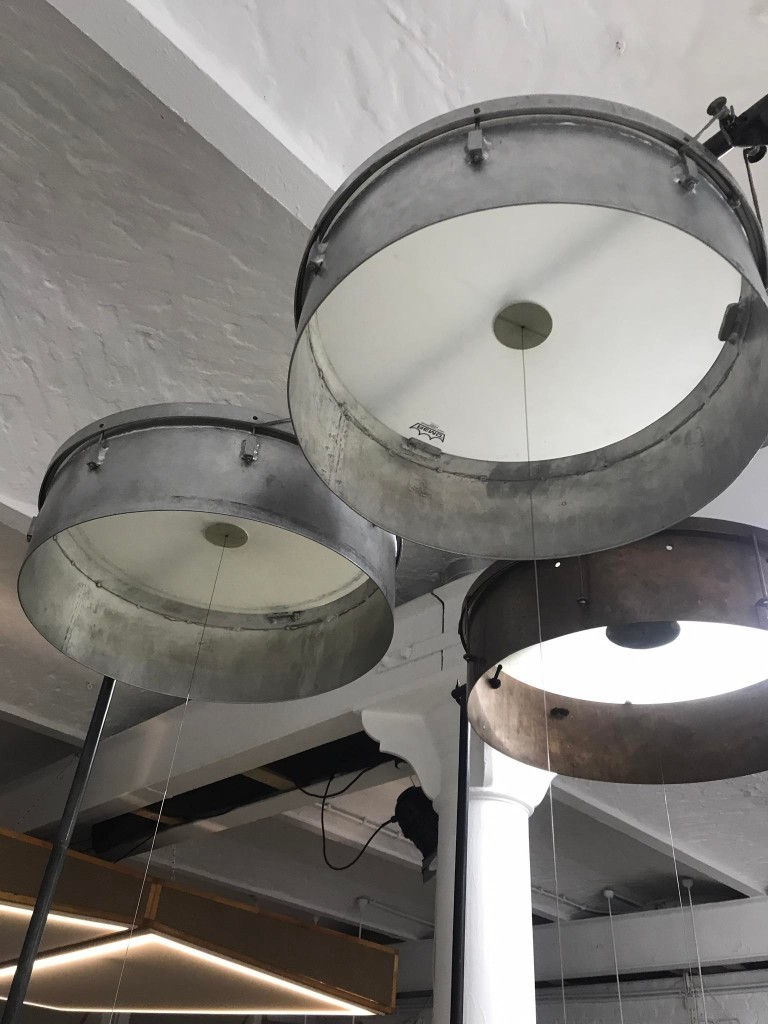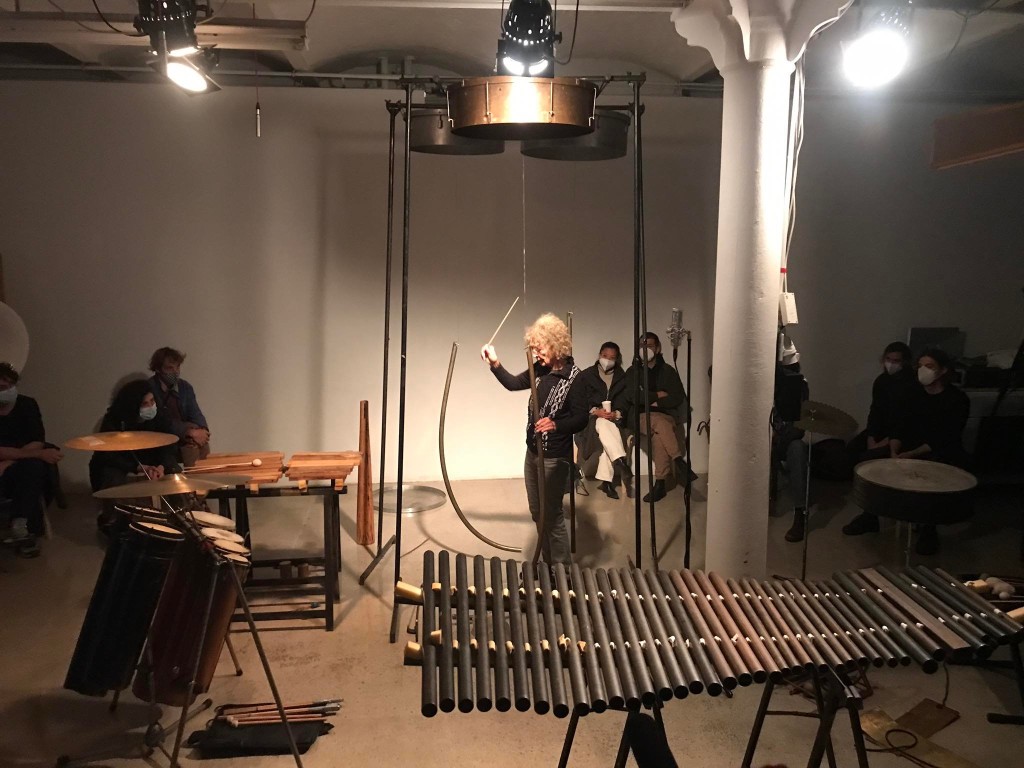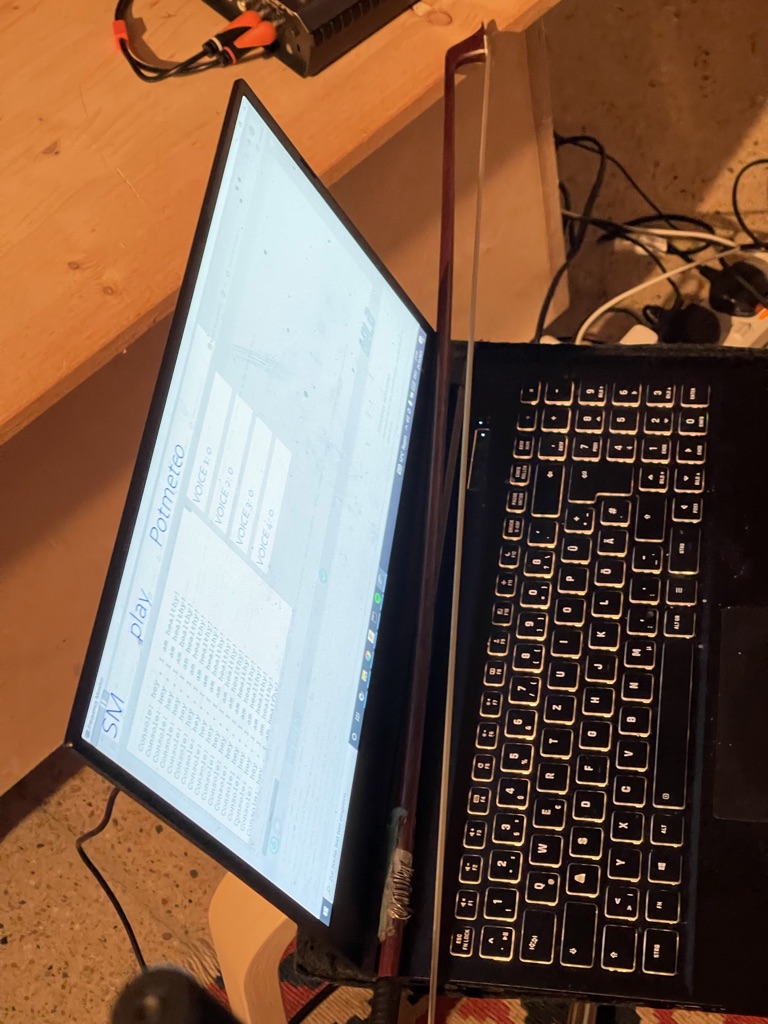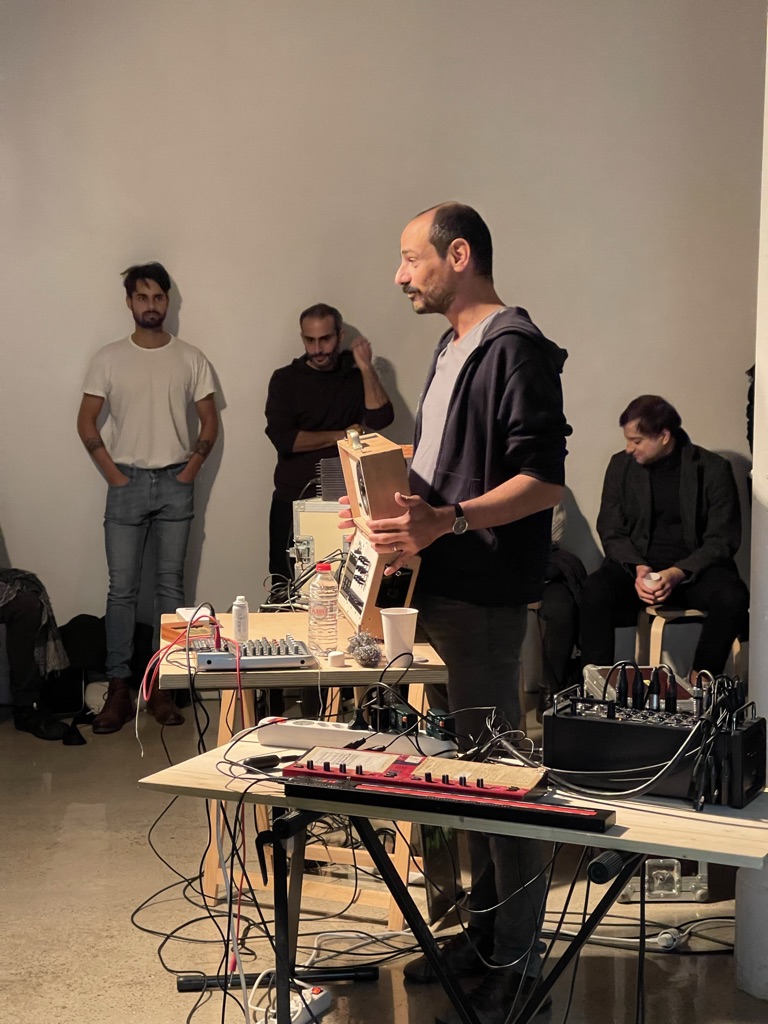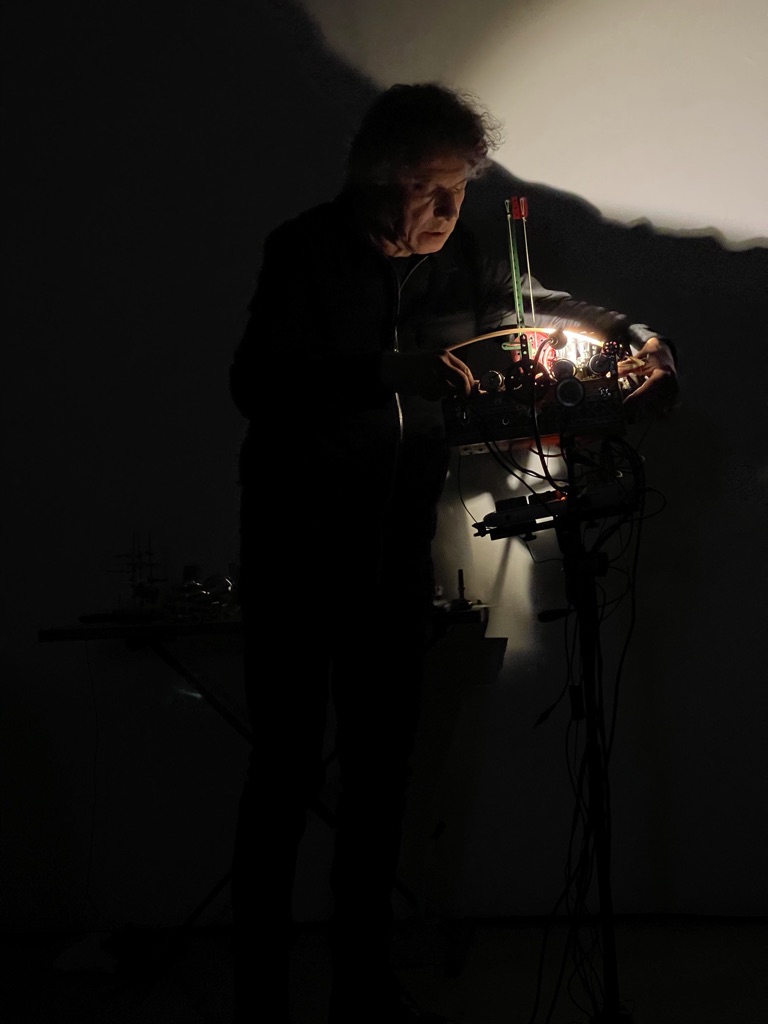In a world when so much seems virtual, remote, simulated, and yet oddly pre-scripted, Berlin’s Morphine Records turned in the month of October to something else. It was musical technology in raw and spontaneous form – intimate encounters, together in a room.
Byblos-to-Berlin, Lebanon-to-Germany curator-DJ-musician, and Morphine boss Rabih Beaini had a unique conceit for “Instruments.” While chance pairings of artists and inventors is not a new idea, he asked for guests – wherever possible – to try improvising on the titular instruments themselves. Ten evenings of performances, in the living room/loft-style environs of the new Morphine Raum studio, made for cozy, lively serendipity.
So each night started with a “guest” instrument – demoed by its inventor/builder or (as with the Cracklesynth by the late Michel Waisvisz) a caretaker. But then, in addition to jam sessions on more comfortable and familiar rigs, artists would swap instruments to try them for the first time. And it was in those moments of reluctance and uncertainty that you could feel people stepping into new areas.
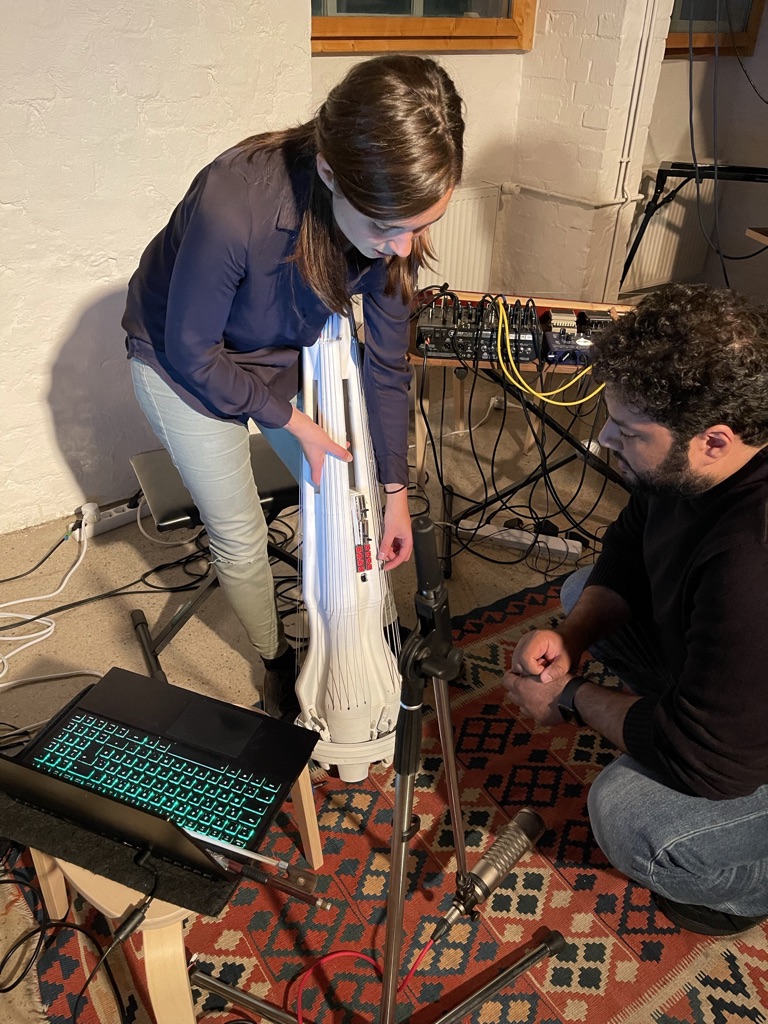
We talk a lot in instrument building about “physicality” – of interface, of sound. But then again, there’s a rabid live coding music scene that uses almost exclusively in-the-box sounds and types away at computers, blowing holes in the notion that interface or analog or acoustic medium is really the main message. So maybe what musicians hunger for more than anything is the physical presence of themselves – mind, body, and soul – in play with one another. It’s not old or new or particular flows of electrons and vibrations in one way or another so much as it is that feeling of play as shared hardship and bliss.
It couldn’t have come at a more needed moment. Germany’s tough lockdown rules had all but halted one of the world’s most hyperactive cultural hives, making its citizens face the dreaded northern European winter depression more or less alone. Yet here we were, crowded together in a studio (vaccine pass check at the door, as per Berlin’s rules). You could see faces again – hear laughter, feel the warmth of musical enjoyment and delight, even have the feeling of being tired together or furrowing brows at tough-to-digest sounds.
And yes, these instruments indeed largely embraced acoustic and electro-acoustic sound – and accompanying chaos, unruly noise, and drawn-outside-the-lines pitch. Maybe that’s the common feeling with what could be mistaken as the opposite in livecoding or other computer scenes – what you get is experimental artists breaking the rules of market-driven musical economy, embracing punk and resistance. It’s not just DIY as self reliance, but also as self-determination and rebellion.
Even the physical presence of sound in the space mattered. The sculptural speakers are themselves hand-built boutique creations, the work of builder Mo Stern. The nature of so many of the instruments as mixing acoustic and amplified sound made the intimacy of the space matter even more – a perfect blend of natural and amplified sound, mixed live, and emanating from the speakers in a unique way that kept them localized rather than virtual. Combining that with the human-to-human interactions was a major part of the outcome of the event.
Common themes blossomed out of the marathon series. From the hand-built, ancient-futuristic-kitbashed-naive technology, this tribe of expert musicians somewhere between high craft and brute-force experimentation found worlds of sound in turns delicate and violent. Repurposed scrapyard metal and deconstructed pianos made of improvised construction rattled and buzzed. Everywhere there were strings and motors and pickups and coils. A surprising number of instruments tended not only to percussion but general cousins and cross-breeds of psaltery. That’d be the class of instruments – zithers and monochords and whatnot – that involve some sort of strings over soundboards. In fact, seeing the mishmash of first-time builds and lab adventures with historical instruments, it’s hard not to be taken away by the, uh, zithery-ness of all chordophone-derived stuff. (We are all zither players, at least when we aren’t metallophone players?)
The lineup included artists who built this craft over a lifetime of work, alongside people who had invested a lifetime in musicianship but only recently got into constructing instruments. It was evident that those didn’t need to be concepts in conflict. The theme of the event – even for audience members, being invited into the action – was both lifelong pursuit of sound and beginners’ mind.

I do want to share what all of this sounded like, but I think it’s better to let that discussion wait some weeks. Filmmakers who were embedded in each event are preparing proper documentation.
For now, I’ll instead link to some of the work of the established artists here and give you some impressionistic images. Somehow those still, from-the-hip mobile phone shots get at the mood.
It was all the stuff of fantasy, repurposed materials, and even as Rabih pointed, the nightmares and fears of a child (Yuri) transformed into dreams come true.
Meet the guests
Here are those artists from their lives, uh, pre-Instruments. Not a complete list, at all – so many folks, wow.
Andrea Neumann.
Marina Cyrino.
Pierre Bastien.
Anette Krebs.
Limpe Fuchs.
Maurice Louca.
Rafaele Andrade.
Mazen Kerbaj.
Yuri Landman.
And posthumously, the artist whose spirit – along with STEIM’s generally – infused a lot of the series’ proceedings, Michel playing his Cracklesynth. (I look forward to sharing this, as it took on a totally different meaning in Mazen’s hands – a sign of a truly unique instrument, to be capable of such range.)
More impressions
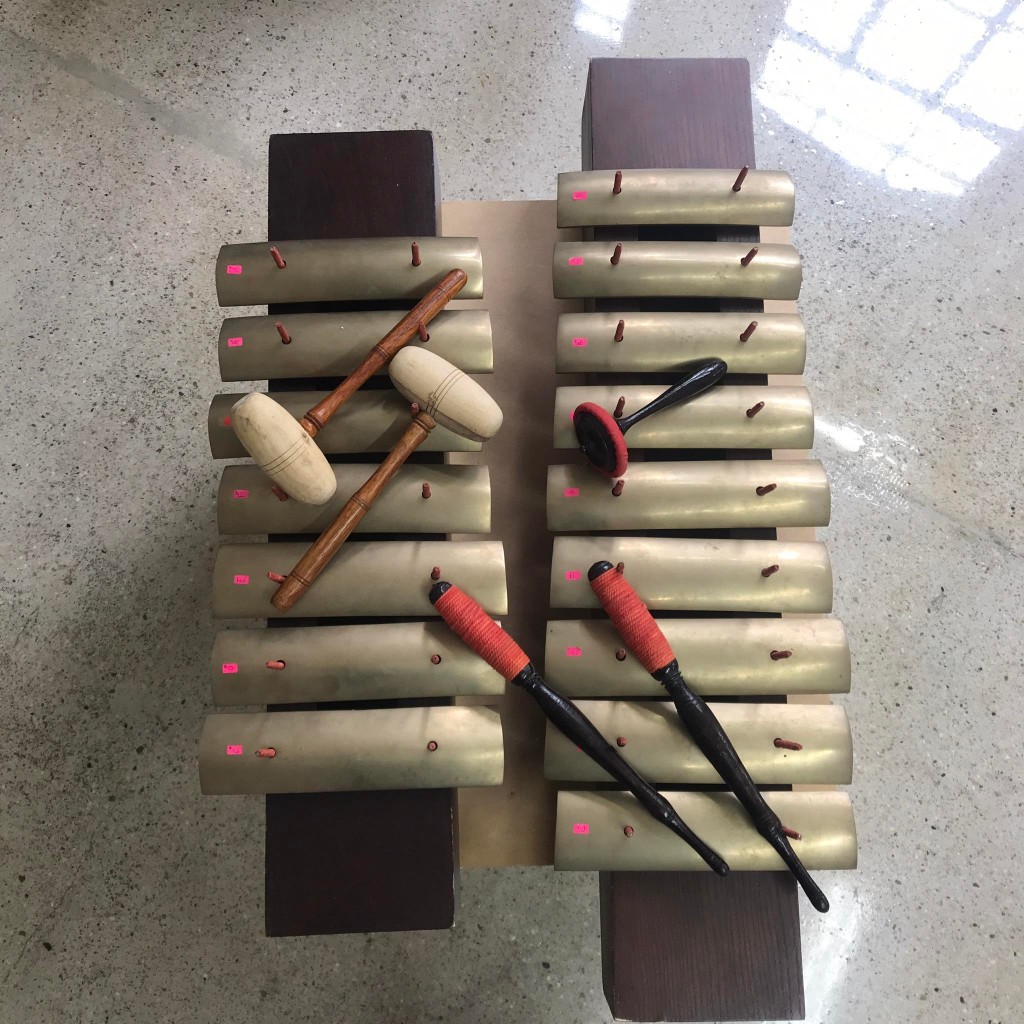

http://morphinerecords.com/instruments/





